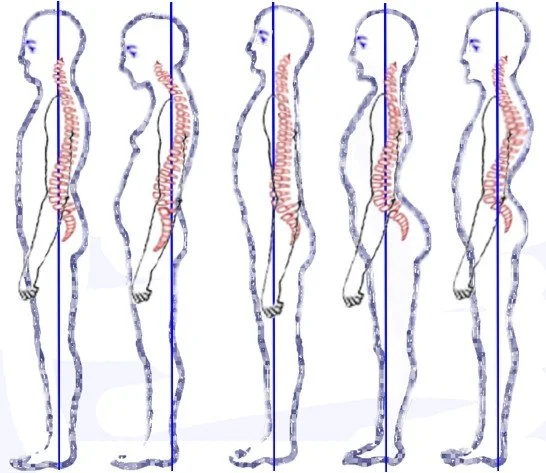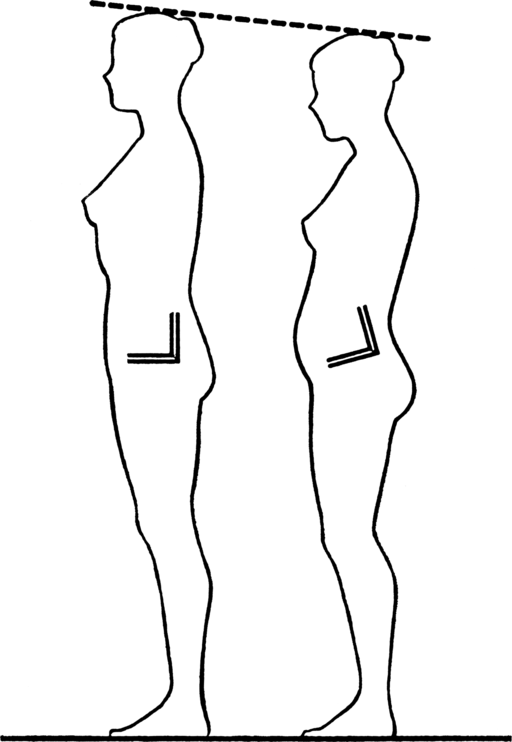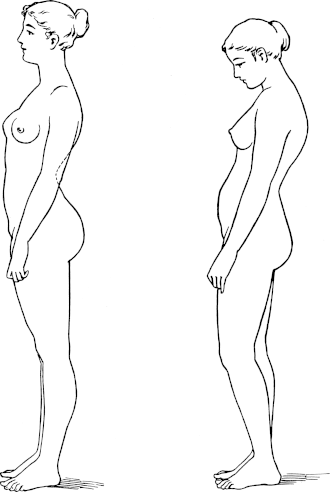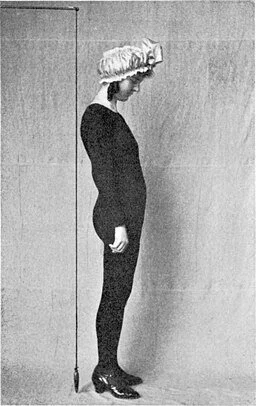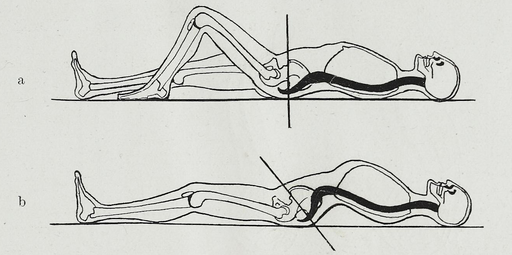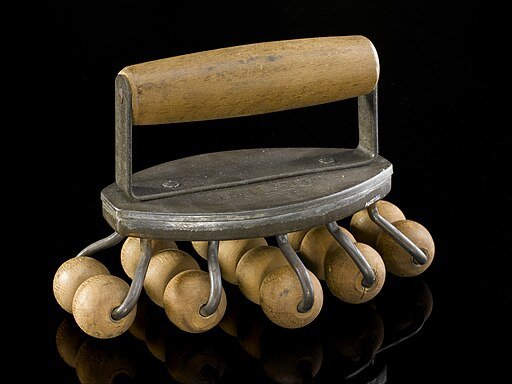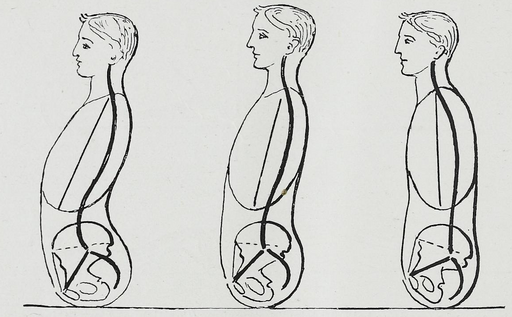Deborah Tosline published the book “Skin Remodeling DIY: An Introduction to the Underground World of Do-It-Yourself Skincare” in 2015. Her approach to skincare is based on a scientific background, a love of research, and over 40 years of DIY skincare experience. In 2025, Deborah became a certified Integrative Wellness Coach through the Andrew Weil Center for Integrative Medicine.
In April 2025, Jane Fonda was told that she looks “amazing for her age.” She replied, “It has to do with how you move, how you carry yourself, your posture,” she notes. “And you can’t carry yourself well and have good posture if your back isn’t strong. So, staying strong and flexible — and I work a lot on balance — this is all critical for staying young.”
I’ve taken posture for granted. I appeared to stand straight, but now I know that my posture was unbalanced, lacked appropriate muscle support, was degrading over time, and resulted in sore and tight muscles that could lead to chronic pain. This is a long, potentially boring retrospective about my DIY soft tissue self-care journey. I hope that others may benefit.
In 2020, I wrote about neck posture here. In May 2022, I understood more and wrote an article titled “Correcting Neck Posture is a Whole-Body Thang.” I continue to unravel the secrets and truths about foundational posture requirements for health (=beauty).
I’ve spent decades unearthing, compiling, assessing, interpreting, and implementing an ever-evolving Do-It-Yourself (DIY) soft tissue self-care practice. I am fully responsible for my posture, physical strength, any lack thereof, and the associated discomfort that muscle imbalances may bring. At times, I have guidance from an osteopath, physical therapist (PT), massage therapist (MT), and other soft tissue professionals and specialists, but the reality is that posture and strength are up to me.
I am responsible for regularly practicing the sometimes tedious but entirely necessary array of exercises and dynamic stretches assigned to me to strengthen and elongate neglected muscles and supporting tissues. It is up to me to schedule new body movements into my current activities and demands. In addition, I am responsible for self-education, understanding my body, and the potential causes and treatments of a particular condition. Physical discomfort is fluid as I proactively correct my whole-body posture. The goal is to live comfortably in my body, pain- and discomfort-free through education and by developing strength and flexibility.
https://commons.wikimedia.org/wiki/File:PSM_V42_D037_Postures_of_listlessness_or_attentiveness.jpg, Popular Science Monthly Volume 42, Public domain, via Wikimedia Commons
My soft tissue issues
In my twenties, I experienced a couple of rear-end collisions that resulted in neck pain. An acupuncturist/body manipulator treated my neck. One day, he said, “you should get a Ma Roller” to loosen my tight back. I bought one on the way home. The Ma-Roller (not affiliated) alleviated my neck pain, and I never saw that practitioner again.
The Ma Roller device was my first foray into DIY soft-tissue care.
Decades later, I had arm and elbow issues that I thought were from over-building DIY construction projects in my spare time. I saw a progressive PT whose techniques worked. She advised me that I had an anterior pelvic tilt and that, until I corrected the tilt, I would continue to have issues with my arms. I mentioned that I was interested in correcting my neck posture. She said that correcting my pelvic tilt took priority over correcting my neck posture. Little did I know that they were interconnected, and it’s impossible to fix one without the other.
I did not research anatomy or how to strengthen weak muscles or loosen tight muscles. When I was conscious and aware, I was able to superficially hold a correct posture, but when I was not actively thinking about it, or I was working hard at something, I returned to an anterior pelvic tilt.
I began to do internet searches on soft tissue care and learned about trigger point therapy. I asked my PT to practice trigger point therapy on me so that I could experience it and learn. I began DIY trigger point therapy and other massage techniques at home to manage muscle aches and to keep muscles soft and smooth.
Fast forward about a decade. Rehabilitation of a sports injury triggered a lower back flare-up. I finally had to face the back pain that I had been ignoring all of my life. An MRI showed dysfunction along the vertebrae. I acknowledged and recognized the back pain and began a new phase of my posture correction journey.
I worked with a PT who specializes in reactivating the brain-muscle connection to develop correct and balanced muscle use. I was given small, light exercises to help me recognize and feel individual muscles. As a result of this work, I recognized that I rarely use the correct muscles while doing activities, like carrying groceries, picking up boxes, or digging in the garden. My abdomen and gluteus muscles were not activating, and instead my lower back muscles were compensating.
Muscle Compensation and Brain Body connection
After an injury, the body protects and heals itself by producing a cascade of biochemical reactions that immobilize the injured area to prevent further damage. Range of motion and muscle use are reduced in the injury area. The brain still wants you to do what you want to do, so it redirects nearby muscles to compensate for the injured muscles. A new brain-muscle connection is made and continues, sometimes for too long. After the injured area is healed, the brain may not reconnect to the healed muscle and instead may continue to use compensating muscles to complete actions. Over time, this may result in discomfort, injuries, and ultimately, chronic pain. Sometimes, one must intentionally reconnect their brain to specific muscles for them to function properly.
Working with a PT, I began to carefully activate and strengthen my abdominal and gluteal muscles to support my lower back and pelvic posture. My PT informed me that, in addition to strengthening my lower back, I needed to correct my upper back posture.
After I finished my work with the PT, I began to independently correct my neck posture and forward-rolled shoulders. I now understand what they meant when they said that I needed to strengthen my mid-back to correct my posture.
https://commons.wikimedia.org/wiki/File:Gutehaltung_desKorbersSchlechteHaltung_desKorpers.gif
While on my own, I am influenced by YouTube (YT) PhDs who share their secrets and remedies to identify the hidden causes of aches, pains, and impingements. YT channels with experienced and educated PTs have provided new and enlightening information that has helped me to better understand my anatomy, injuries, and what happens when the posture is out of balance.
https://commons.wikimedia.org/wiki/File:SpirellaHOW_TO_ADJUST_-_04.jpg
My posture goals
At age 66, I am correcting my full-body posture to:
• enhance my body awareness.
• retain my full range of motion and strength throughout life.
• use my body in a balanced way to avoid injury.
• minimize potential pain and discomfort.
• avoid taking standard prescribed or over-the-counter pain medication throughout life.
• improve my neck and profile appearance.
https://commons.wikimedia.org/wiki/File:Braus_1921_273.png, Braus, Hermann, Public domain, via Wikimedia Commons
My DIY soft tissue Maintenance and tool library
I used to avoid exercise and yoga “accessories.” I felt that I didn’t need fancy appurtenances until I began DIY trigger point therapy. In recent decades, I’ve acquired an array of tools that I use to help me manage soft tissue maladies. I travel with some of them. Most individual tools are not expensive. Having a variety of tools helps me reach hidden sore spots in particular areas. I am not affiliated with any of the tools or objects that I mention in this article.
https://commons.wikimedia.org/wiki/File:Massager,_Germany_Wellcome_L0057907.jpg, See page for author, CC BY 4.0 <https://creativecommons.org/licenses/by/4.0>, via Wikimedia Commons
Fascia blaster – A fascia massage tool. I have two long-handled tools and one facial tool.
I use the FaceBlaster often to warm up tissue and to smooth fascia before deeper work.Gua sha – This is a fascia scraping tool that I use often to warm up tissue and smooth fascia.
Cupping – I use my cupping tools to increase circulation and to move metabolic waste away from sore muscles to reduce congestion (thanks to my massage therapist for this tip!)
Rubber body roller with needles – I can’t remember or find the raw vegan beauty advisor who distributed these decades ago. I use it periodically to stimulate skin circulation or to distract the mind from underlying pain.
Various rock massage tools – As a geologist, I can’t resist rock massage tools like rollers, scrapers, and a rock ball on a long, sturdy spring from the Gem and Mineral show in Tucson, AZ.
Stainless steel massage tools – Special shapes can massage small, hard-to-reach areas, and they appear to be indestructible.
Various sizes and types of balls – I use these for trigger point therapy. I began with a tennis ball, which I continue to use. I added a six-inch bumpy ball, which led to a 3-inch yoga ball, a 1-inch super ball, and a 4-inch air-filled ball. These are used to access different areas and depths of the body. They range in the amount and type of pressure that they apply.
Foam roller – I roll to loosen muscles. I have a 1-foot hard roller and a 3-foot soft, bumpy roller. I use the 3-foot every day and travel with the 1-foot roller. It helps that much.
Rubber exercise bands – Apparently, I love rubber bands of all lengths, widths, and strengths. My favorites are short, sturdy silicone bands and lonnnnng bands. The lonnnnng bands are handy for a seemingly unlimited variety of dynamic stretching and strengthening exercises. I pondered this purchase for a long time (like any purchase I make) and continue to enjoy the flexibility these provide (ha ha).
Near-Infrared Light – What can I say? I’ve used red and NIR light since about 2008 based on NASA research. I adore how I feel and how my skin looks after I use the lights. I use a NIR light bulb or my DIY NIR sauna every day. I started for the collagen and stayed for the skin benefits and pain relief. I use NIR light as a primary pain reliever anywhere and everywhere. Healing.
Sauna – I join gyms for their saunas. I don’t care if they’re dry or steam. I’ve taken a weekly sauna for about 30 years. Heating my core deeply, relieves pain and discomfort.
Epsom salt bath – I typically take an Epsom salt bath once a week. I use two cups of salts and soak for 40 to 60 minutes.
Massage guns – I have two: one long-handled that was recommended by “Bob and Brad” of YT fame, and one smaller version that they sell. I use them both.
Yoga mat – I now have several yoga mats and am grateful to have the space to leave them out. I can easily stretch or roll at a moment’s notice.
Yoga block – I avoided these for a long time. Now I look forward to the time when I will buy a second block. They are handy for calf stretches, resting your head, or sitting on during yoga.
Pull-Up bar - this hangs from a door frame and is good for dead hangs and stretching.
Standard pain prescriptions and over-the-counter medication – I avoid, big time.
https://commons.wikimedia.org/wiki/File:Braus_1921_274.png, Braus, Hermann, Public domain, via Wikimedia Commons
Conclusion
Through the decades, I’ve pieced together information from doctors, specialists, PTs, MTs, journal articles, books, YT videos, and experience. I continue to coordinate with folks to get images, diagnoses, interpretations, and advice when needed, but the bottom line is, it’s up to me. I have to heal myself. I can take their advice, but I must set aside time and put in the effort to do the work. Knowledge, insight, discipline, and perseverance. The transition is not easy. Some days, I feel worse. I know that with time, I will feel better and for now, I have the best abdominal muscles of my life.
I am grateful to be able-bodied. Choosing a lifestyle that supports health may be the best insurance for a mobile, active, independent life free from discomfort and over-the-counter and prescribed pain medicines.
If you need more information about DIY skin care, check out the local library, search the Internet, or check out my past blog articles. It would be an honor for me if you purchased my skin care book. Thank you!
Take good care of yourselves!
XO Deborah
This article is intended to be used as general information only and is in no way intended to replace medical advice, be used as a medical treatment program, diagnosis, or cure of any disease or medical condition. There are no warranties, expressed or implied, regarding the effectiveness of the practices described in this article. Products or substances discussed herein are for educational purposes only and are not intended as recommendations of the author.
